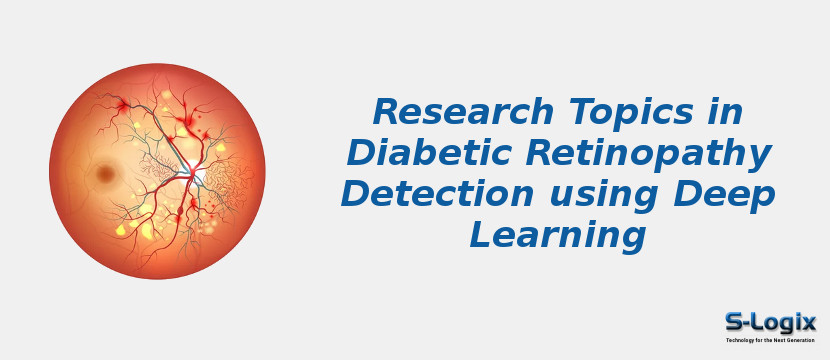Diabetic Retinopathy is a condition of diabetes that affects the eyes, leading to vision loss. Deep learning techniques are applied for early detection and diagnosis of this diabetic Retinopathy. A common approach involves training deep learning models on a dataset of retinal images and using the trained model to make predictions on new images.
The deep neural networks typically use feature extraction and classification layers to recognize characteristic patterns and changes in the retinal tissue indicative of diabetic Retinopathy. In real-time, the deep learning model is trained on a huge dataset of labeled retinal images and is then fine-tuned on a smaller dataset of images particularly labeled for diabetic Retinopathy.
After the training stage, deep learning models provide a fast and efficient way to detect diabetic Retinopathy in its earlier stages and prevent vision loss. The accuracy of deep learning models for diabetic retinopathy detection is even better than that of experienced human readers or experts, making it an optimistic tool for screening and early detection.
High Accuracy: Deep learning models can accomplish greater accuracy in detecting diabetic retinopathy, comparable to or even outperforming that of experienced medical readers.
Speed and Efficiency: Screening retinal images for diabetic retinopathy can be automated and completed rapidly, facilitating more efficient and scalable screening.
Reduced Human Error: By relying on a machine learning model, there is a minimum probability of human error in detecting diabetic retinopathy, resulting in more constant and reliable outcomes.
Improved Patient Outcomes: Early detection of diabetic retinopathy can lead to elicit treatment, depleting the risk of vision loss and enhancing patient outcomes.
Cost-effective: Automated screening using deep learning models can be more inexpensive than manual screening by human readers, particularly when performed at scale.
Integration with Electronic Medical Records: Deep learning-based diabetic retinopathy screening can be easily incorporated into electronic medical records for tracking and management.
Lack of Large, Annotated Datasets: Despite the increasing availability of retinal images, high-quality annotated datasets are still scarce, which are required to train deep learning models with high accuracy.
Inter-observer Variability: There is variability in how different human observers analyze and label retinal images, which can impact the quality of the training data and the performance of deep learning models.
Image Quality: The quality of retinal images can vary broadly, owing to factors including lighting, focus, and patient movement, making it problematic for deep learning models to detect diabetic Retinopathy precisely.
Generalization: Deep learning models trained on one dataset may not conduct well on another, especially if there are important differences in image quality, resolution, or type of equipment used.
Explanation and Interpretability: Deep learning models can be difficult to analyze and explain, making it challenging to understand the reason for particular diagnoses and the validation of results.
Integration with Clinical Practice: There are still challenges in combining deep learning models into clinical practice, including difficulties related to data privacy and security, regulatory approval, and reimbursement.
Continual Improvement: As technology and understanding of diabetic Retinopathy continue to grow, it will be significant to continually improve and update deep learning models to improve their accuracy and effectiveness.
Telemedicine: Telemedicine is essential for producing medical care for remote or rural patients. Deep learning can be used to identify diabetic Retinopathy, permitting patients to access the care they require without having to travel long distances to see a specialist.
Clinical Decision Support: Deep learning can be utilized in clinical decision support systems to impart automated diagnoses of diabetic Retinopathy and other eye diseases. It depletes the time required to diagnose patients and the possibility of errors.
Image Analysis: Deep learning can be applied for automated retinal image analysis, facilitating faster and more accurate diagnosis.
Screening: Deep learning can be applied to automate the screening process for diabetic Retinopathy more accurately.
Disease Progression Tracking: Deep learning tracks the progression of diabetic Retinopathy over time, leading to early diagnosis and treatment.
Treatment Planning: Deep learning can assist in creating personalized treatment plans depending on an individual disease progression and risk factors.
